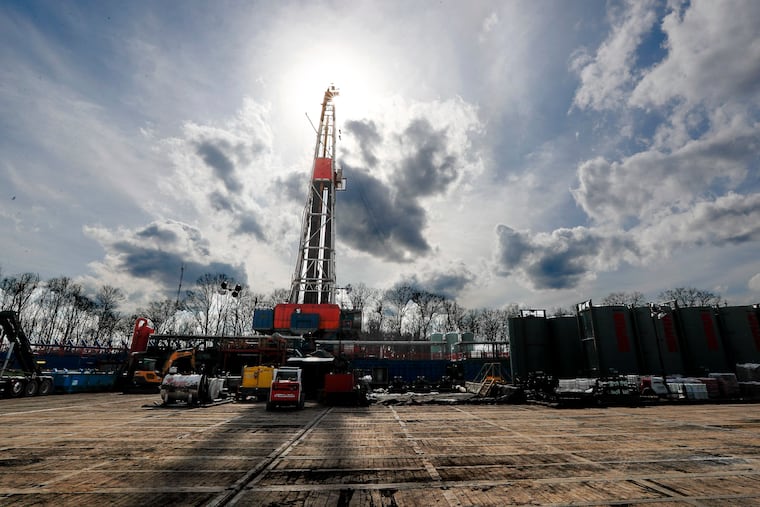Fracking jobs will disappear. Pennsylvania has to manage the decline. | Editorial
Workers have gotten a rough deal during the decline of coal and oil, but Pennsylvania can approach natural gas differently.

The natural gas industry in Pennsylvania is worried about its future — and rightfully so.
During last week’s virtual global climate summit, President Joe Biden announced a goal of cutting greenhouse gas pollution in half by 2030, from a 2005 baseline. Biden has already rejoined the Paris Agreement and set a goal of reaching net-zero emissions by 2050.
The U.S. will not reach the 2030 goal without Pennsylvania, which produced nearly 10% of all energy in the nation in 2018 — only second to Texas. Now the state has an opportunity to manage the decline of its polluting energy industry while investing in sustainable, high-paying green union jobs as a replacement.
» READ MORE: Biden climate plan draws praise from environmentalists, wariness from Pa.’s natural gas industry
While burning natural gas emits less CO2 than burning coal or oil, natural gas is abundant in methane — a powerful greenhouse gas that traps more heat than does carbon, though it lingers for less time. The United Nations will soon release a report declaring it urgent to cut methane to prevent the worst effects of climate change.
Natural gas production nationwide was responsible for 47% of methane emissions by industry in 2018. And that doesn’t account for storage and distribution. The Pennsylvania Department of Environmental Protection has identified 8,500 unplugged abandoned oil and gas wells and estimates approximately 200,000 older undocumented wells, many of which may be leaking methane. Multiple studies suggest that methane leaks are undercutting natural gas’s ability to dramatically contribute to emissions reduction as a “transition fuel.”
Yet, despite all this evidence, and commitments from Gov. Tom Wolf to reduce emissions, Pennsylvania continues to build infrastructure for the natural gas industry — whether via the leaking Mariner East pipeline, new fracking permits, and subsidized petrochemical plants.
In Western Pennsylvania counties, where fracking is abundant, there is understandable collective trauma from past decline of industry. Since 1990, Pennsylvania has lost 42,000 jobs in metal manufacturing and 12,000 in coal mining — a 60% job loss in these two industries. Fracking natural gas was supposed to be a godsend. Instead, fracking created dramatically fewer jobs than industry promised, and those jobs created are now at risk.
Fear of that loss should not be taken lightly. But one reason the decline in coal and steel was so painful is that it wasn’t managed. The rug was pulled out from under workers’ feet. Pennsylvania can do things differently this time.
» READ MORE: Sunoco failed to disclose some risks of Mariner East pipeline, was ‘negligent’ in response to concerns, judge rules
The opportunity is undeniable. The two occupations that the Bureau of Labor Statistics projects see growing fastest in coming years are solar panel installers and wind turbine technicians. The White House is proposing investment that will create millions of jobs in the sector. If Pennsylvania transitions fossil fuel subsidies — totaling $3.8 billion in fiscal year 2019 — into green jobs, the transition will be even faster. It is critical these investments go to the communities that lose fossil fuel jobs and those, predominantly Black communities, that have suffered the most harm from pollution.
As the climate crisis worsens, more abrupt and painful measures to decrease emissions fast will become necessary, yet increasingly inadequate. Pennsylvania has a choice: wait for the decline, or manage it, benefiting workers and the environment.